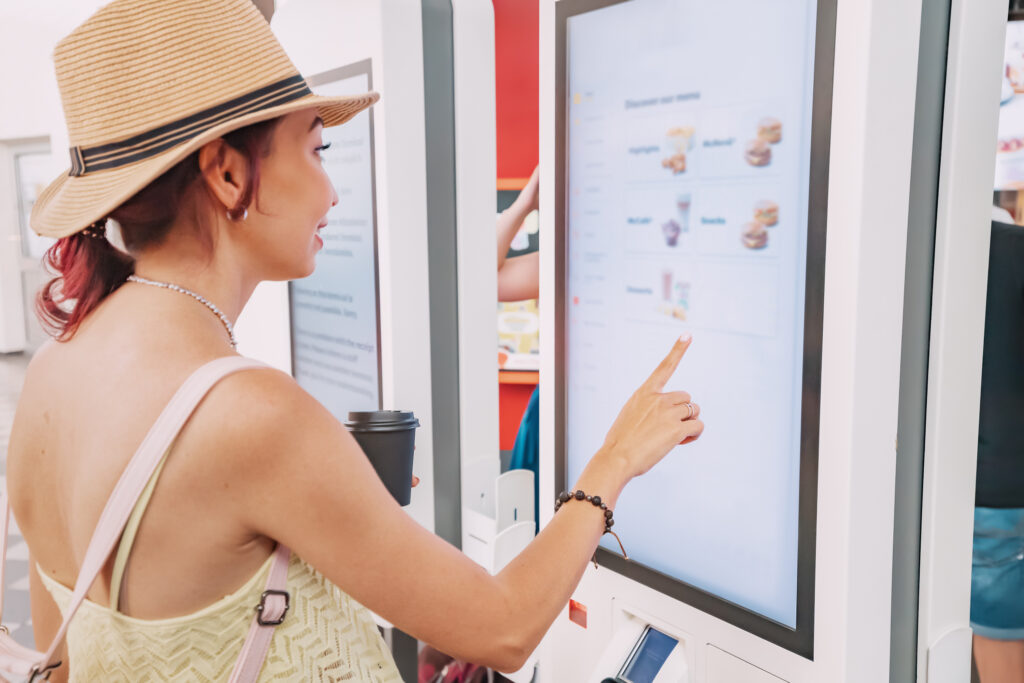California’s Fast Food Minimum Wage Hike: Much Too Much, Much Too Soon . . . But What Now?
February 2024 Restaurant Insights: Declining Sales and Cleanliness Imperatives
Discover the latest insights into the restaurant industry's February 2024 performance, revealing a concerning decline in sales alongside the critical importance of maintaining cleanliness for positive customer ratings.
Read MoreNavigating Industry Performance Amidst Weather and Economic Challenges
January offered little clarity in terms of the current health of the restaurant industry from a year-over-year growth perspective.
Data-Driven Insights Financial Performance Market Intelligence Out of the Box Insights
Read MoreAI Self-Service in Restaurants: Enhancing Efficiency Without Compromising Customer Experience
As restaurants embrace AI self-service technologies to boost efficiency and navigate labor challenges, finding the delicate equilibrium between innovation and maintaining a personalized customer experience becomes imperative.
Restaurant Social Listening Workforce Intelligence
Read MorePromising Start to 2024: The Restaurant Industry Ended 2023 on a High Note
December saw a 2.3% YoY increase in restaurant sales, amid weather-related nuances, while the industry anticipates leveraging a stabilized labor market for growth in 2024.
Read MoreHuddle House Q&A: Breaking Down the Casual Dining Chain’s 360-View of the Restaurant Experience
GuestXM sat down with Huddle House to discuss how the brand takes guest feedback from data-analysis to decision-making.
Restaurant Social Listening Thought Leadership
Read MoreHit Your Performance Goals in 2024: Important Restaurant KPIs to Track
Learn how restaurant operators can create successful strategies for 2024. Discover the importance of establishing internal alignment on key metrics and tracking the right KPIs for hitting performance goals.
Data-Driven Insights Financial Performance Restaurant Marketing
Read MoreAccelerated Sales & Traffic Growth Bring Optimism to Restaurants
In November, the restaurant industry saw accelerated same-store sales and traffic growth, marking the strongest traffic performance in almost two years.
Data-Driven Insights Out of the Box Insights Sales and Traffic
Read MoreQ4 Restaurant Sales & Traffic Trends Reveal Positive Trajectory
Unlock key insights into October's restaurant sales and traffic trends, revealing a positive trajectory for the industry, while delving into the implications of California's minimum wage hike and examining Q3's top performers based on net sentiment.
Read MoreCustomer Satisfaction Benchmarks: What Is a Good CSAT Score?
Calculate and interpret your CSAT score, navigate industry benchmarks, and discover actionable insights to enhance customer satisfaction in the competitive restaurant landscape.
Data-Driven Insights Restaurant Customer Surveys
Read MorePreparing Your Restaurant for the Seasonal Rush
Navigate the holiday rush and post-holiday slump with insights on wellness menus, loyalty programs, tech innovations, and actionable feedback to keep your restaurant thriving year-round.
Data-Driven Insights Restaurant Marketing Sales and Traffic
Read MoreRestaurant Industry Insights You Need to Know Heading into 2024
Explore key insights from GuestXM’s Q4 State of the Restaurant Industry.
Data-Driven Insights Sales and Traffic
Read MoreBridging the Gap Between Your CXO & CMO
Learn how bridging the gap between CX and marketing initiatives can lead to remarkable business growth and enhanced guest experiences.
Data-Driven Insights Restaurant Marketing
Read MoreCategories
Subscribe to our Out of the Box Insights
Our monthly update providing data and insights for the restaurant industry.
